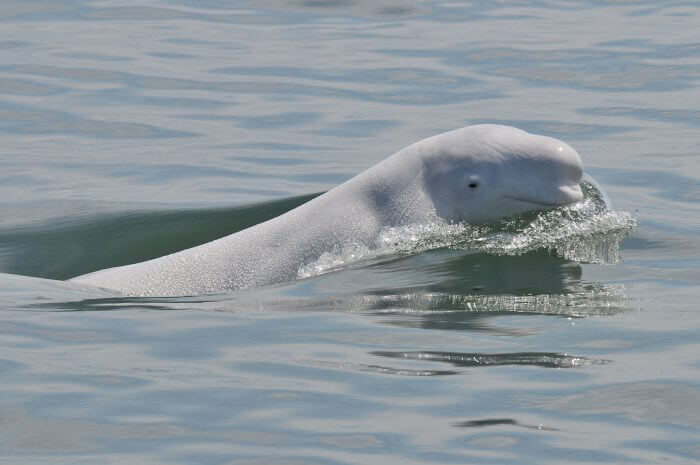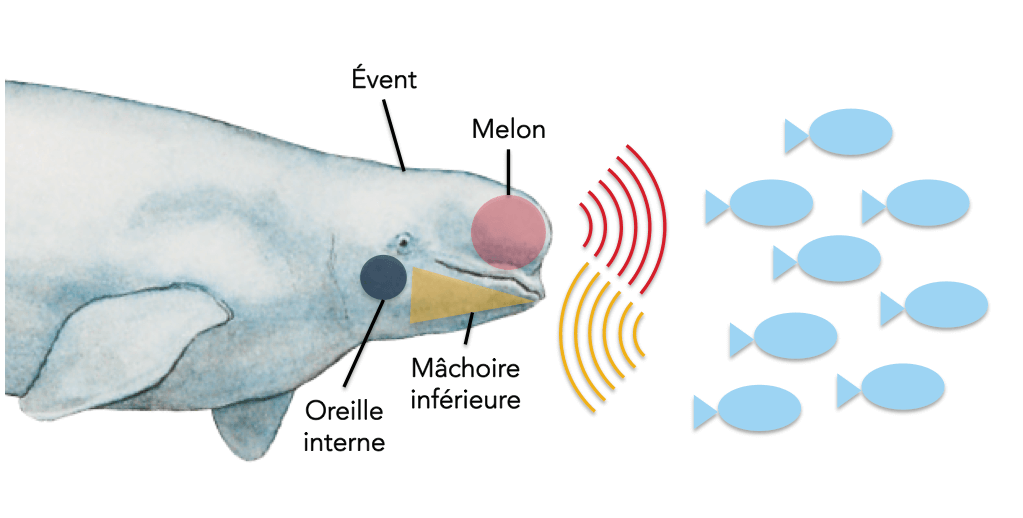In water, light is scarce, but sounds travels quickly. In such an environment, toothed whales such as belugas, sperm whales and dolphins cannot rely on their vision alone to orient themselves and locate prey, but can use echolocation. Echolocation works like radar in bats or like ultrasound!
Sound waves, some of which have very high frequencies, are thought to be generated by vibration of the phonic lips, vocal cord-like membranes located in the nasal passages, below the blowhole. A fatty cavity at the front of the head called the melon is then used like a sound box. Some of the emitted sounds bounce off of obstacles and are thus returned to the animal. The hollow, fat-filled lower jaw receives the sounds, which then travel to the inner ear to be analyzed by the brain.
Noise can therefore have a considerable impact on belugas, which is why it is forbidden to approach within 400 metres of these animals.
Learn more
- (2005) Fontaine, P-H. Communication et écholocation. (Canada). Baleines et phoques : biologie et écologie: 69-81.






